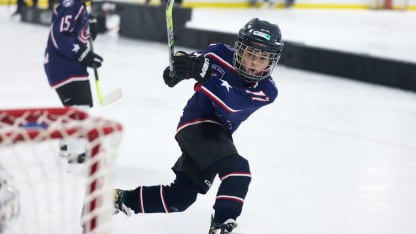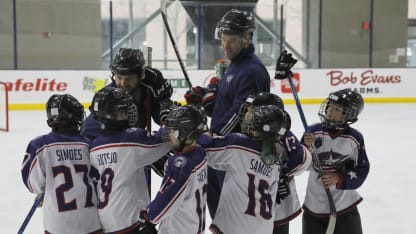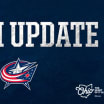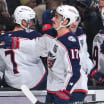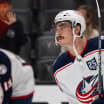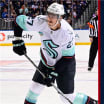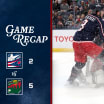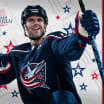As Columbus continues to grow as an outstanding hockey town, so does the need for youth hockey and development.
Since the establishment of the Blue Jackets over two decades ago, the team and community have established numerous learn-to-play programs and beginner-level opportunities. However, there seemed to be a gap between the first time the kids stepped on the ice to when they were lacing up their skates for the high school stage.
In 2022, the Blue Jackets Hockey League was implemented in hopes to bridge this disconnect. The Blue Jackets Hockey League is a recreational program in Central Ohio, welcoming players boys and girls aged 5-14 years old. Home to approximately 1,600 youngsters, the league is the next step in player development for kids who have finished learn-to-play programs.
“What we are is the continue to play version after the learn to play,” said Dave Caruso, the senior director of amateur hockey programming for the Blue Jackets. “They have the Learn to Play program, which is step 1, 2 and 3 that gets kids into hockey and improves their skills. Once they get into Hockey 3, they are able to enter the Blue Jackets Hockey League, so they need that requirement to come in and then it is an easy transition.”
The structure of the league follows that of the American Development Model coupled with the long-term athlete development principles, both stemming from USA Hockey. Specifically, the goals are to have more Americans “Play, Love and Excel” in the sport of ice hockey.
“The Blue Jackets Hockey League follows our ADM principles focusing on what makes for a great youth sport experience,” said Ken Martel, senior director of player and coach development for USA Hockey. “For example, our five elements of a quality practice at every age – fun, challenge, looks like the game, constant decision making and repetition without repetitiveness.”
The Blue Jackets Hockey League separates itself by prioritizing training based on age and what is developmentally appropriate for the kids, with teams ranging from 6-and-under all the way to 14-and-under. Programs who have adopted these ideas have seen significant growth in participation and level of performance by their athletes.
“The most important thing is doing what is age appropriate and developmentally appropriate for the kids,” Caruso said. “We use that to guide us in everything we do and all our programming because in the end, we want every kid to play hockey and stay in the sport.”

